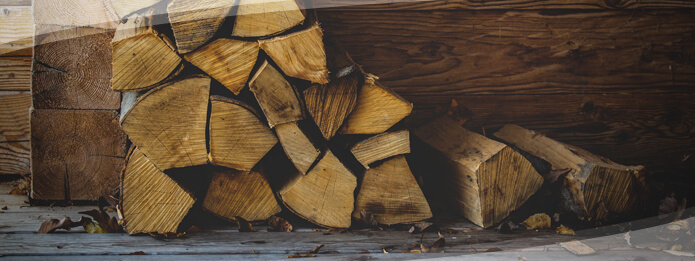
Pests can be pretty clever when they want to be. They use ingenious methods to survive, feed and breed – even in winter. They’ll hitchhike, crawl, jump and transport themselves around the country using a variety of techniques. One of the safest places for them, believe it or not, is that healthy pile of firewood you’ve been looking forward to using.
We’re going to discuss which pests will try to hide in your firewood and why they’re there. We’ll share a few tips on how to prevent pest control issues arising from your firewood. If you find yourself with any pest control issue, then give our Truly Nolen team a call.
Which Pests Are Hiding in There? And Why?
Firewood is a great place for pests to hide, particularly during winter. Within the piles of firewood pests will be hidden, they can build reasonably strong nests and it’s likely to be a dark, warm area. But the actual pests living within it may still surprise you.
Spiders are particularly common pests to find in there. In fact, spiders regularly spin webs inside firewood and lay sacks of spider eggs. Unless you inspect the situation, you’re unlikely to find these eggs and the situation will get considerably worse.
Carpenter ants are another pest that will enjoy the firewood you provide for them. Other types of ants will live in there too, but they’re nowhere near as dangerous as carpenter ants. Once they’re bored of that wood, they’ll quickly turn to the timber that holds your home together.
Finally, mice are regular woodpile residents. Not only will they hide here during the day and reproduce, but they’ll also bring parasites and other infections into your home with them. They’ll quickly reproduce and create a disastrous combination within that woodpile.
How Do You Know They’re There? And How Can You Stop Them Getting There?
You’ll be able to spot the signs of carpenter ants with piles of wood shavings. You’ll also be able to see their bodies – they’re pretty big for ants. The first sign of a mouse infestation will probably be the sound of their squeaking and gnawing, or else you may find their droppings nearby.
The first thing you need to do is consider where you store your woodpile. Store your wood outside and preferably off ground level. Make access to it as difficult as possible. Try not to leave the wood undisturbed for too long – by checking it regularly and preventing it from rotting, you’ll be able to spot infestations much sooner. If you can, cover it with a tarp too.
Finally, make sure that you only bring the wood you need into your home. If you bring in more wood than is required, you’ll leave it lying around somewhere. And, you’ll have just transported a whole family of pests into your home. Some of the wood you leave lying around could have spider egg sacs or carpenter ant colonies within it – don’t take the chance.
Even in Winter, Truly Nolen Can Help
And when you find pests in your home, it isn’t worth taking the chance then either. Your home can quickly become overrun by dangerous pests – get in touch with Truly Nolen as soon as possible.
We know exactly where to look for pests inside your home, and we’ll identify nests within woodpiles straight away. Call us today for a free quote and find out how we can help, even in winter.